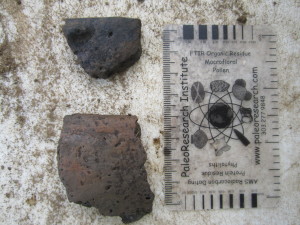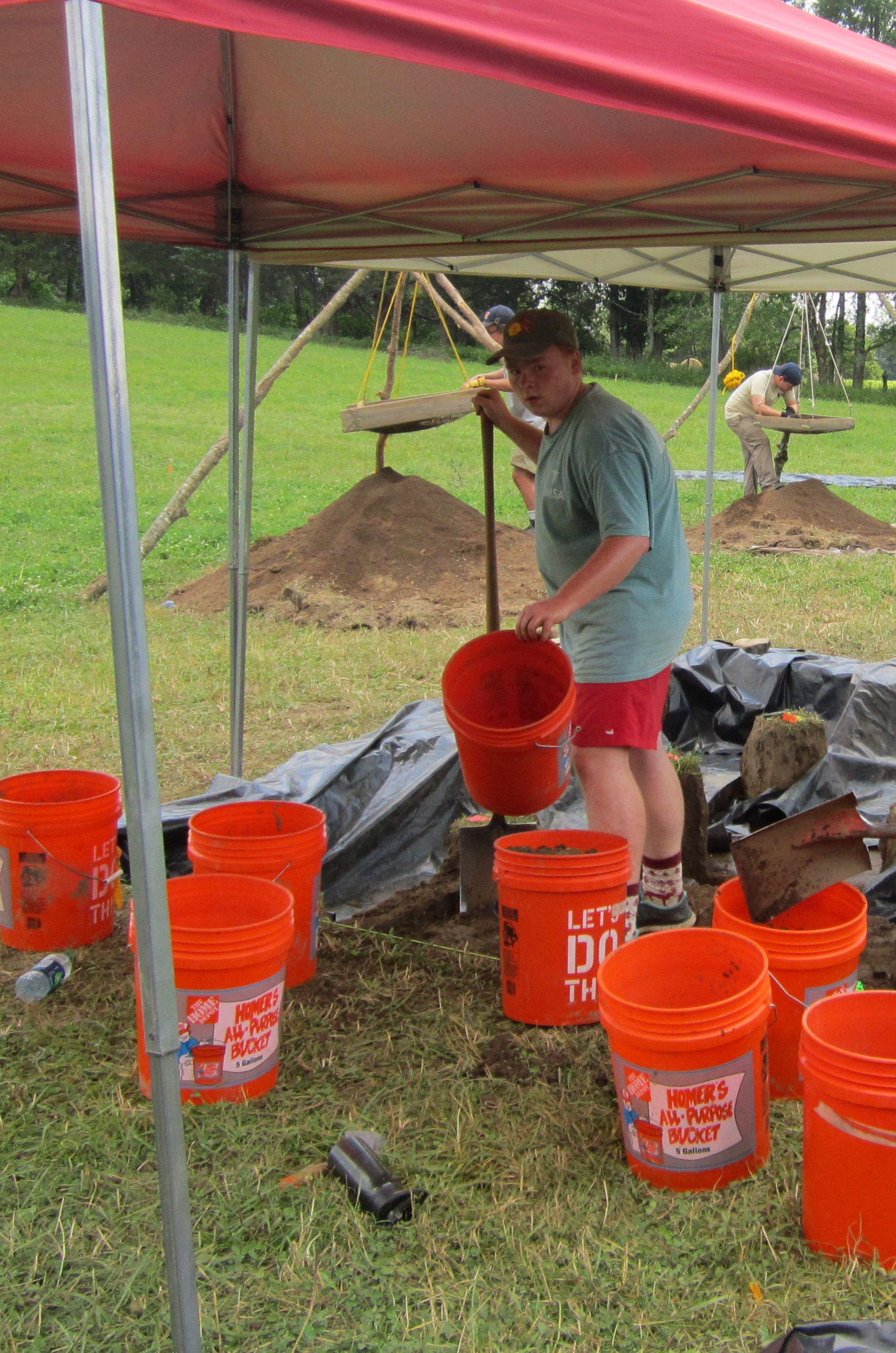 Today at the dig site I began my day with a few shovel tests, which consist of a two person team, one digging the holes and the other looking for artifacts as well as noting changes in both soil color and texture. These changes are important as they help us pinpoint the many different soil levels that exist in the ground beneath your very feet. While sifting through the soil we mainly found flakes of chert or flint, as well as lithics, which are flakes removed from larger flint in the making of stone tools. Both of these symbolizing the possibility of a tool production area, or a debitage (which is basically a large pile of trash), which is important in helping us understand the life of the people who had once lived at this site. My partner and I completed almost 5 shovel tests ranging from 30 cmbs, or centimeters below the surface, all the way up to 55 cmbs in the 3 hours we were out in northeastern field at the site.
Today at the dig site I began my day with a few shovel tests, which consist of a two person team, one digging the holes and the other looking for artifacts as well as noting changes in both soil color and texture. These changes are important as they help us pinpoint the many different soil levels that exist in the ground beneath your very feet. While sifting through the soil we mainly found flakes of chert or flint, as well as lithics, which are flakes removed from larger flint in the making of stone tools. Both of these symbolizing the possibility of a tool production area, or a debitage (which is basically a large pile of trash), which is important in helping us understand the life of the people who had once lived at this site. My partner and I completed almost 5 shovel tests ranging from 30 cmbs, or centimeters below the surface, all the way up to 55 cmbs in the 3 hours we were out in northeastern field at the site.
 Later on in the afternoon I returned to the main site to continue excavation on our large unit, that when completed will be a mammoth 4 x 4 Meters, digging the individual meter by meter blocks and then sifting through all the soil keeping a keen eye out for anything that might be thought of as an artifact. At the main sight this can possibly range from animal bone, to ceramics sherds, while also including more chert, lithics, charcoal, and limestone. Today we also found a possible “Chunkey Stone,” which was a popular Mississippian era game that involved two people one rolling the “Chunkey Stone”, or a rounded stone usually around the size of softball, and the other participant throwing a spear attempting to either hit the stone or to land in the spot where it stops depending on how you play the game. This is important because as we find artifacts such as chunky stones we continue to gain a better understanding of the people who once roamed the lands many people today call home.
Later on in the afternoon I returned to the main site to continue excavation on our large unit, that when completed will be a mammoth 4 x 4 Meters, digging the individual meter by meter blocks and then sifting through all the soil keeping a keen eye out for anything that might be thought of as an artifact. At the main sight this can possibly range from animal bone, to ceramics sherds, while also including more chert, lithics, charcoal, and limestone. Today we also found a possible “Chunkey Stone,” which was a popular Mississippian era game that involved two people one rolling the “Chunkey Stone”, or a rounded stone usually around the size of softball, and the other participant throwing a spear attempting to either hit the stone or to land in the spot where it stops depending on how you play the game. This is important because as we find artifacts such as chunky stones we continue to gain a better understanding of the people who once roamed the lands many people today call home.